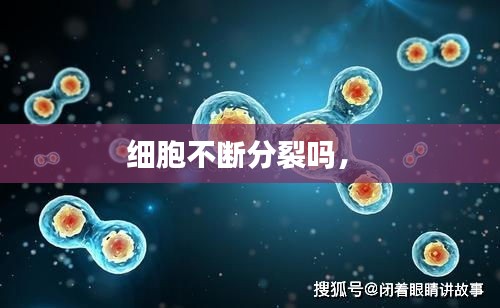<!DOCTYPE html>
<html lang="en">
<head>
<meta charset="UTF-8">
<meta name="viewport" content="width=device-width, initial-scale=1.0">
<title>Cell Division: The Continual Cycle of Life</title>
</head>
<body>
<h1>Cell Division: The Continual Cycle of Life</h1>
<h2>Introduction to Cell Division</h2>
<p>Cells are the fundamental units of life, and their ability to replicate and divide is essential for the growth, development, and maintenance of all living organisms. The process of cell division, known as mitosis, is a complex and highly regulated process that ensures the accurate duplication of genetic material and the distribution of this material into two daughter cells. This article delves into the question: Do cells continually divide?</p>
<h2>Understanding Mitosis</h2>
<p>Mitosis is the process by which a single cell divides into two genetically identical daughter cells. This process is crucial for growth, tissue repair, and asexual reproduction. Mitosis consists of several distinct stages: prophase, metaphase, anaphase, telophase, and cytokinesis. During these stages, the cell's DNA is replicated, condensed, separated, and finally distributed into two nuclei. Each daughter cell then undergoes cytokinesis, which physically divides the cell into two separate entities.</p>
<h2>Continual Cell Division in Development</h2>
<p>In the early stages of development, cells undergo rapid and continual division to form tissues, organs, and the complex structures of multicellular organisms. This process is vital for the growth and development of the organism from a single fertilized egg to a fully formed individual. The rate of cell division during this period can be incredibly high, with some cells dividing as frequently as every 24 hours.</p>
<p>For example, during early embryonic development, the blastocyst undergoes a process called blastulation, where the zygote divides into a hollow ball of cells. This rapid division is necessary for the formation of the three germ layers: ectoderm, mesoderm, and endoderm, which will eventually differentiate into all the tissues and organs of the body.</p>
<h2>Cell Division in Maintenance and Repair</h2>
<p>After the initial stages of development, cell division continues in various tissues to maintain their structure and function. In the skin, cells divide to replace those that are shed or damaged. In the gut, cells divide rapidly to replace the lining that is constantly worn away by digestive processes. This continual division is essential for the proper functioning of tissues and organs throughout an organism's life.</p>
<h2>Cell Division in Asexual Reproduction</h2>
<p>In asexual reproduction, organisms produce offspring that are genetically identical to the parent. This process often involves the division of a single cell into two, each of which can develop into a new individual. Examples of asexual reproduction include binary fission in bacteria, budding in yeast, and fragmentation in some plants and animals. In these cases, the continual division of cells is the primary means of reproduction.</p>
<h2>Limitations to Cell Division</h2>
<p>While cell division is a fundamental process for life, it is not without limitations. Cells have a finite number of divisions they can undergo before they enter a state of senescence or undergo apoptosis (programmed cell death). This is due to the gradual accumulation of DNA damage over time, which can lead to genetic instability and increased risk of cancer. The Hayflick limit, named after Leonard Hayflick, refers to the number of times a normal human cell can divide before it becomes senescent, typically around 50 to 70 divisions.</p>
<h2>Conclusion</h2>
<p>In conclusion, cells do continually divide, but this process is highly regulated and has limitations. From the earliest stages of development to the maintenance and repair of tissues throughout an organism's life, cell division is a critical and dynamic process. However, it is also subject to constraints that ensure the stability and integrity of the genetic material and the overall health of the organism. Understanding the intricacies of cell division is crucial for advancing our knowledge of biology and for developing medical treatments that can harness or modulate this process.</p>
</body>
</html>转载请注明来自金坛区指前镇锦文建材厂,本文标题:《细胞不断分裂吗, 》












 蜀ICP备2022005971号-1
蜀ICP备2022005971号-1
还没有评论,来说两句吧...